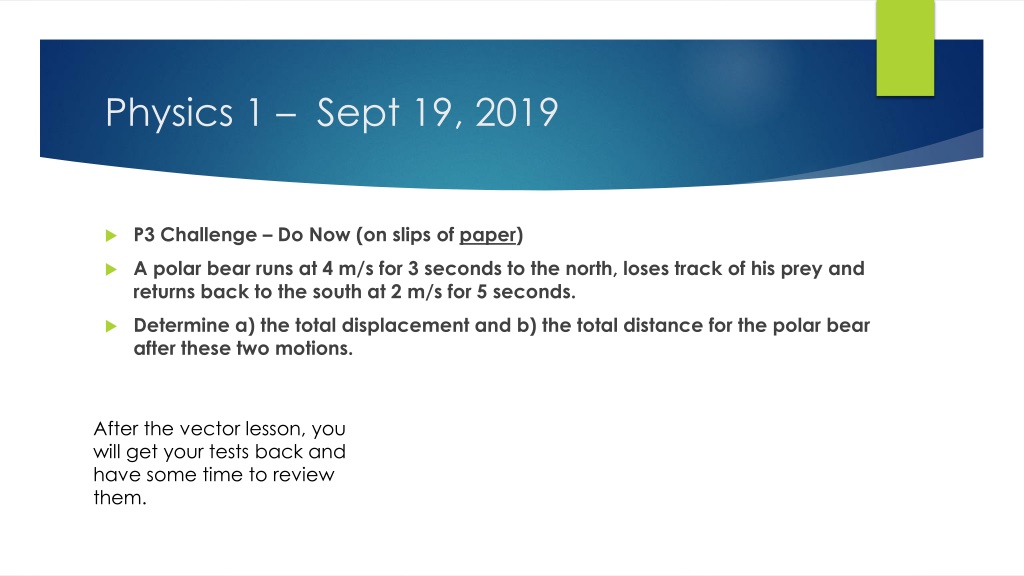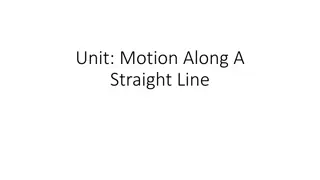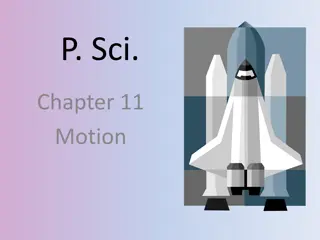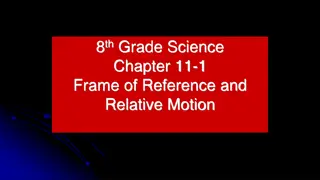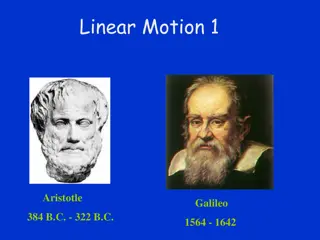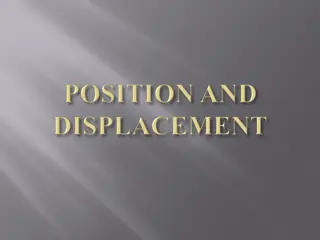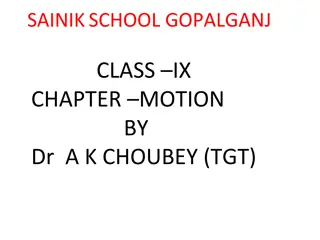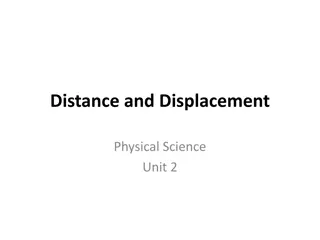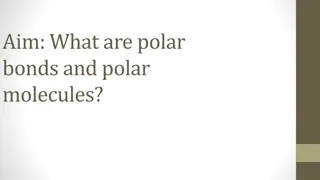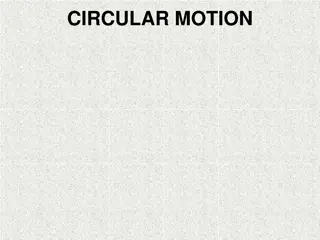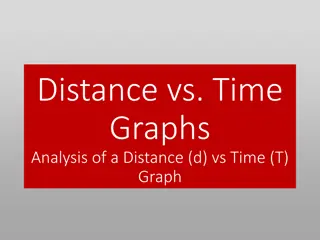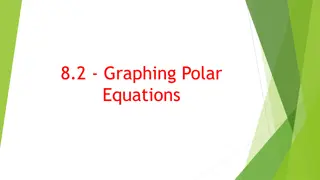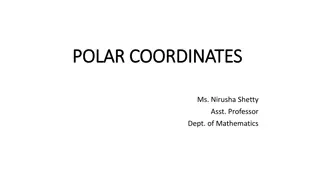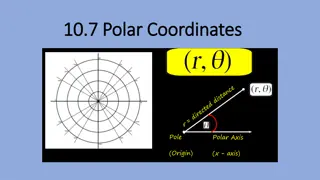Polar Bear Motion Analysis: Displacement and Distance Calculation
A polar bear runs north at 4 m/s for 3 seconds then south at 2 m/s for 5 seconds. Learn to find its total displacement and distance covered using vector algebra graphically. Understand vector representation, magnitude, direction, and adding vectors graphically with the parallelogram and triangle methods.
Download Presentation

Please find below an Image/Link to download the presentation.
The content on the website is provided AS IS for your information and personal use only. It may not be sold, licensed, or shared on other websites without obtaining consent from the author. Download presentation by click this link. If you encounter any issues during the download, it is possible that the publisher has removed the file from their server.
E N D
Presentation Transcript
Physics 1 Sept 19, 2019 P3 Challenge Do Now (on slips of paper) A polar bear runs at 4 m/s for 3 seconds to the north, loses track of his prey and returns back to the south at 2 m/s for 5 seconds. Determine a) the total displacement and b) the total distance for the polar bear after these two motions. After the vector lesson, you will get your tests back and have some time to review them.
Objectives and Agenda IB 1.3 Vectors Vectors in 2D with graphs and with trigonometry Agenda for IB 1.3 Vectors Representing 2D vectors Vector algebra Adding vectors graphically Components of vectors Assignment: IB 1.3 Vectors and Scalars Worksheet p1-2
Vector Representation Vectors have magnitude and direction They are represented graphically with an arrow. The length of the arrow represents its magnitude. In 1D direction can be indicated by sign. In 2D, there are two primary ways to indicate direction: N NNE NNW NE NW Angle to the positive x axis (from math class) ENE WN W Counter clockwise is positive E W Expressed in degrees up to 360 (or radians) Compass points (or degrees NSEW of a direction) WSW ESE SE SW SSE SSW S
Vector Algebra Two vectors are equal iff they have both the same magnitude and direction. (iff means if and only if ) A scalar multiple of a vector: The magnitude is multiplied, the direction remains unchanged. Opposite vectors: Equal magnitude, direction differs by 180 You may move a vector to a new location if you maintain its magnitude and direction. A vector in standard position has its tail on the origin of your frame of reference.
Adding vectors graphically The vector sum of two vectors is called a resultant and is also a vector Method 1: The parallelogram method A) Place two vectors in standard position. B) Copy one of the vectors and place its tail at the tip of the second vector. C) Copy the second vector and place its tail at the tip of the first vector. This forms the last side of the parallelogram. D) The resultant is the vector from the origin to the intersection of your two copied vectors. You can measure the resultant using a ruler and protractor.
Adding vectors graphically Parallelogram method is limited to adding only two vectors. Method 2: The triangle method A) Place one vector in standard position. B) Imagine a new origin at the tip of the first vector. Place the second vector to be added with its tail at the tip of the first. C) Repeat step B placing each new vector to be added tail to tip of the last vector. (You can add more than 2 vectors.) D) The resultant is the vector from the origin to the tip of the last vector. (with only 2 vectors you form a triangle which gives the method its name)
Practice adding graphically Add A = 4.0 N at 30 and B = 8.0 N at 135 graphically using both methods. (Sketches are fine at this point. Consider it graphical estimation.) Estimate resultant directions to 10
Vector Components In physics, it is often useful to treat the two dimensions of a 2D situation independently. situation independently. In physics, it is often useful to treat the two dimensions of a 2D To that end, every vector can be split into two 1D parts To that end, every vector can be split into two 1D parts X component X component Y component Y component Just like 1D vectors, the signs of components indicate their directions. A positive component is directed along the positive axis. A negative component is directed along the negative axis. component is directed along the negative axis. Just like 1D vectors, the signs of components indicate their directions. A positive component is directed along the positive axis. A negative
Vector Components From trigonometry, we can determine formulas for the components in terms of the magnitude A and the direction . A Acos A A sin = = x y Find the components of A = 4.0 N at 30 and B = 8.0 N at 135 You can reverse the process by applying the Pythagorean Theorem and the definition of tangent.
Vector Components You can reverse the process by applying the Pythagorean Theorem and the definition of tangent. 2 2 = + A A A x y A A y = 1 tan x Note that anytime you take the inverse tangent, there are two possible answers. The one your calculator tells you and one 180 opposite that angle. (from math class) If Ax is negative, use the +180 version. (The sign of Ay is irrelevant.)
Exit Slip - Assignment What are the components of 65 m/s at 120o ? What s Due? (Pending assignments to complete.) IB 1.3 Vectors and Scalars Worksheet p1-2 What s Next? (How to prepare for the next day) Adding Vectors Analytically
